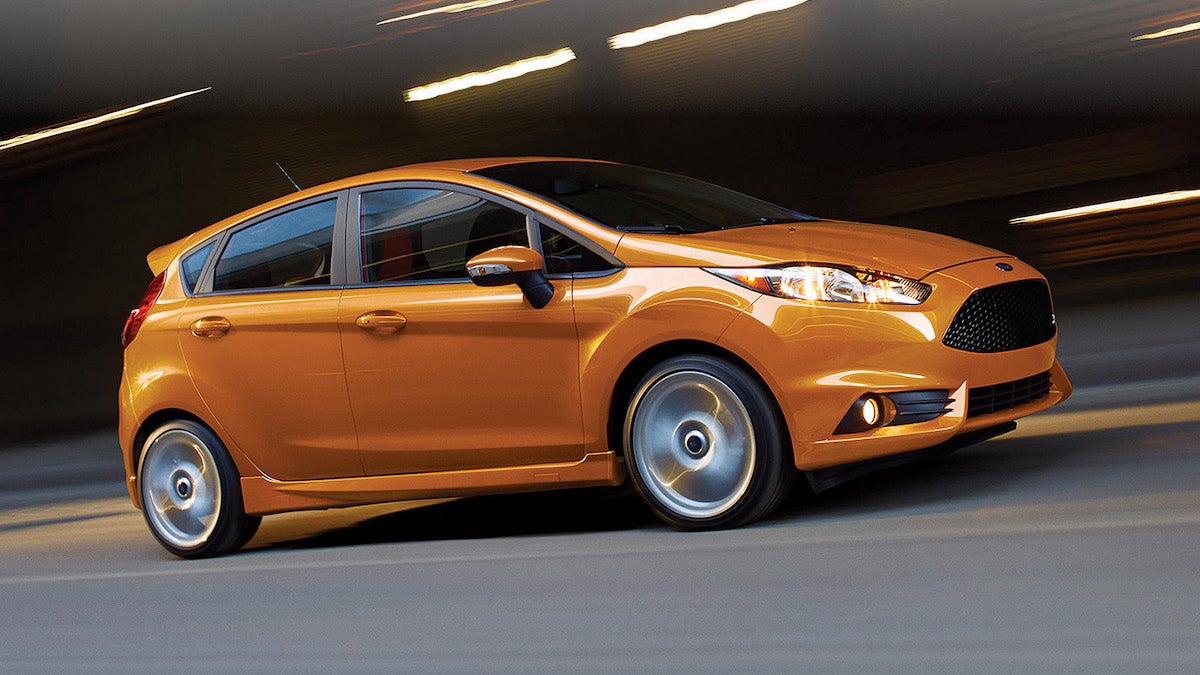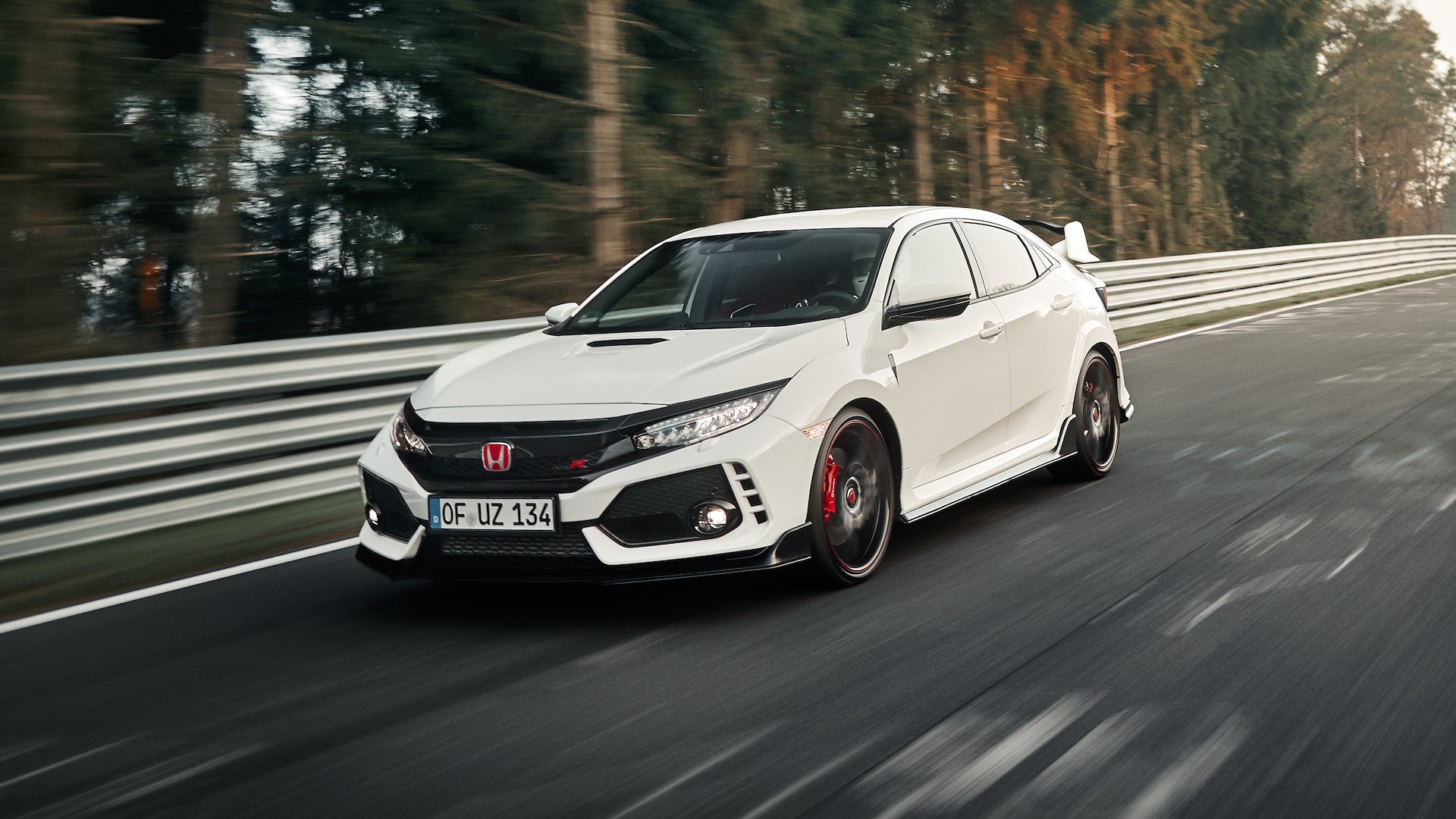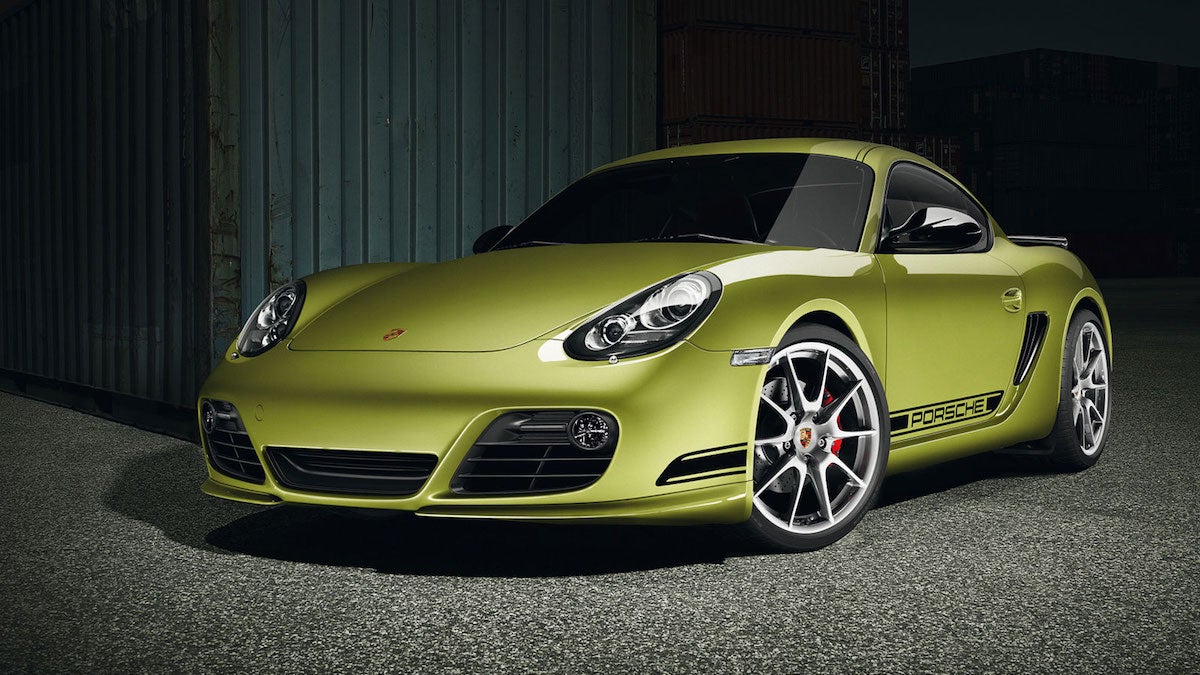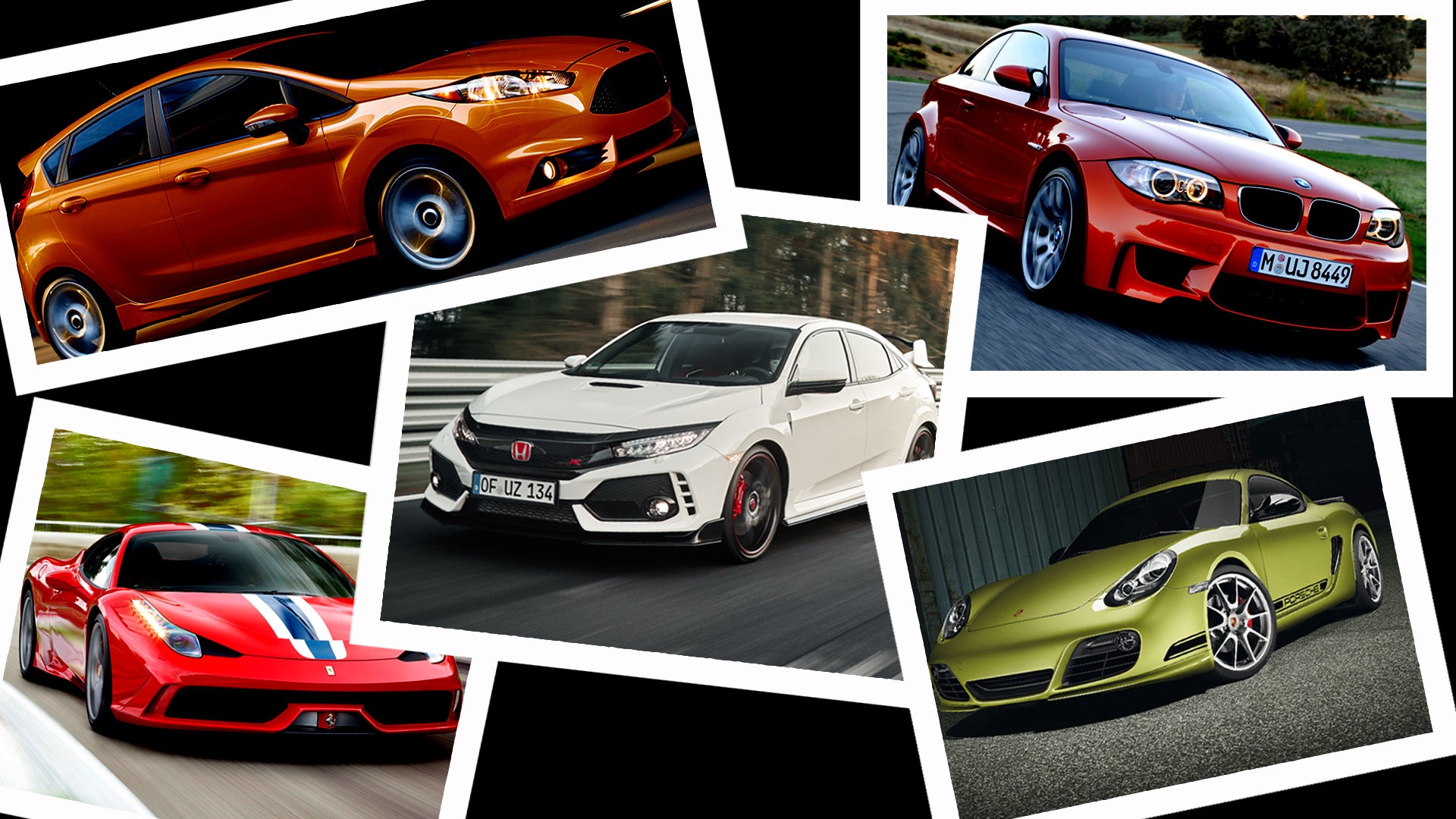Ten years. Seems like only yesterday William Shatner was in his late seventies and Facebook had full data workups on only 500 million citizens. (Now it’s 2.5 billion.) It’s been a real steam whistle of a decade, opening with a global economic meltdown and closing with a Boston Dynamics android doing backflips on YouTube, just a software update away from robbing liquor stores or starring in The Bachelor. Oh, and at some point a Florida woman married a Ferris wheel named Bruce.
Important things happened in the car world this decade too. Gymkhanas two through 10 came out, as did Fasts and Furiouses four through 8.5. By the midway point, we’d been introduced to Dieselgate, stance culture, and some guy who got a tattoo of an alternator thinking it was a turbocharger. Before the clock struck 10 years, we’d seen the first 300-horsepower Toyota Camry and 96-month car loan, and watched the last great showman of the auto industry gather $25 million in stacks of Benjamins by whacking the steel door of his Joseph Eichler tract house of an electric pickup truck with a mallet. Eat it, Preston Tucker.
Still, within that screwball decade some outstanding cars arrived. Cars that defied the sad descent into drive-by-wire numbness decried by many. Cars that combined today’s mind-twisting performance numbers with real character. Fun cars that linger in our memory, and that we would love to revisit if given the chance. Even better, there’s a solid option in nearly every budget, from $400,000 on down to $22,000.
For me, choosing 10 would have been easy, but culling the list down to five was torture. Here’s the best I could do on 10 years' notice.
5.) Ford Fiesta ST

During the early 2000s, we Americans who were fans of hot hatches had our faces pressed to the glass as the old, Duratec-powered Ford Fiesta ST made its bones in Europe. But we needn’t have sweated it, since the first ST wasn’t quite as good as we Yanks surmised. When the ST finally landed in the U.S. in 2013, filling out the sixth-gen Fiesta lineup with EcoBoost power, it was a different animal entirely. We couldn’t believe our luck—what a package it was. It had perfect symbioses of chassis dynamics and steering feedback, gearing and power delivery, analog feel and computer-assisted systems. It was the smallest hot hatch we’d seen in years, and best of all, it was a joy to drive.
The ST is a full sensory experience, with a gruff, motorsports-y engine note that encourages constant applications of throttle. A standard six-speed manual, whose longish shifter throws can be made perfect with a Cobb kit, matches gearing precisely tuned for close-combat canyon runs. Its 1.6-liter turbocharged four, producing 180 horsepower and 177 pound-feet, offers just enough low-rev potency to fire the adrenal glands, but not so much that it obscures the simple joys of the chassis.
A zero-to-60 acceleration time of under seven seconds belies how much fun the ST makes getting there. I have fond memories of bombing desert highways at dusk, aided by subtle brake-based torque vectoring, and sometimes leaning hard on the throttle to evoke overboost and its 15-second maximum of 197 hp. Maybe I’m romanticizing a bit, but I’m pretty sure the dearly departed ST will be remembered fondly enough to be a true classic in a few years. For now, it’s going to haunt me until I get my hands on one again.
4.) Honda Civic Type R

Of all the production cars whose looks, from nose to tail, were inspired by mecha anime, the Civic Type R is... Well, it’s the only one. Its Gundam-suit styling gets internet fingers smoking, but you’d be well advised to skim past all that. The Type R is not only the first red-R-badged Honda to be sold as-new in the U.S., it's also the best front-wheel-drive sports car currently built by anyone, anywhere.
Yes, there are fake intakes, part of a design whose artifice is dialed straight to 11, even if much of it was done with aerodynamics and thermal management in mind. Meanwhile, the driving pleasure is entirely authentic. Words like “alive” and “alert” spring to mind, as do “damn” and “hoo ha.”
Owing to, or conceivably in spite of, its Nürburgring-intensive development, the Type R is capable of garish performance feats and is also content just to pick up the dry cleaning. It can toggle back and forth from its Civic and Type R personalities seamlessly, making it one of the most livable and hottest hatches in existence.
From that 2.0-liter VTEC turbo putting power down like a dragon fireblasting the castle gates, to its exquisite shift throws and close initial-three gearing, to a front strut design—similar to Ford’s RevoKnuckle—that separates damper movement from steering pivot to control torque steer, to a chassis-steering match that sends a bandwidth of information to the hands and feet, it's everything you'd want in a front-wheel-drive sports car and more. The controls are perfectly tactile too; the steering is weighty but precise, its brakes intuitive in initial stomps and feelsome enough for light-touch trail braking through decreasing-radius corners, and of course, it shifts snappily like a Honda.
At the same time, the Type R doesn’t have the screaming madness of rev-to-the-moon Hondas of old. Rather, it’s the grown-up child of a tuning culture that pwned the early 2000s with more batshit turbo Civics than Sport Compact Car could have handled if it published hourly.
I’ve already gone over word count. Get your hands on a Type R and see for yourself.
3.) Porsche Cayman R

There’s a devil on my shoulder saying, “just type ‘Porsche Cayman GT4’ and let’s go get wasted.” I will not do that, shoulder broh. Yes, the 2016 GT4 is still as good as contemporary critics said it was (as is the 2020 GT4 and Boxster Spyder). It's capable and characterful, but it's serious. A bit too stiff for a satisfying road drive and slightly cold when it's not being absolutely mugged around a racing circuit. The 2012 Porsche Cayman R, on the other hand, is an engaging all-rounder that's far more than its one-page engineering brief suggests.
Indeed, the Cayman R is only different by increment from a Cayman S. The R is a little bit lighter, a touch lower, barely more powerful, and slightly faster. The suspension tune is only mildly different than the S’s, with stiffer springs and anti-roll bars, and a hair more negative camber in the front and rear. It has a mechanical limited-slip, defying Porsche's prior ban on Caymans with LSD. With aluminum doors, fewer noise-damping materials, composite seats, and lighter wheels, the Cayman R is about 2,855 pounds all in, or 121 lbs lighter than the S (with manual transmission, and with air con and stereo deleted). It doesn’t seem like much of a difference, and it's no match for the 1967 911R from which it got its weight-shedding ethos. But the Cayman R’s brilliance lies in the small spaces between.
From the feathery touch of its doors, to the roughness of its nylon door pulls, to the sounds its 3.4-liter, 330 horsepower boxer six makes at full throttle, resonating through the raw door panels, the Cayman R is a sensory delight. It lights up a canyon road with a sublime combination of chassis compliance and agility; there's a real sweetness in the steering. Even its launch color, the chartreuse-y Peridot metallic, signals a specialness that can't be teased from a spec sheet alone.
Am I merely saying the 987-era Porsche Cayman was a high-water mark for sports cars that happened to benefit from a slightly more aggressive tune? Well, yeah. Still, is the Cayman R memorable? Hells yeah, broh.
2.) BMW 1 Series M Coupe

The BMW 1 Series M is the ideal counterpoint to the Porsche Cayman R. The two limited editions shared a “driver’s car” spirit and have similar performance specs, but the follow through is completely different. The 1M is a heavily modded version of the standard 1 Series, a tragically underutilized platform, whereas the Cayman is a pure sports car. Visually, there's little to differentiate the Cayman R from a standard Cayman, whereas the 1M looks like a cartoon bulldog, with a wide, squarish stance and short wheelbase. A long way, in both looks and character, from the 135i.
Not to mention the 1M is a straight-up rocket ship. Its inline six is turbocharged, not naturally aspirated like the Cayman, telegraphing BMW's performance plan for the rest of the 2010s. Unlike the Cayman, which needs a heavy foot to coax its flat six out of hiding, the 1M is explosive at lower revs (and thus more, er, sensible around town as well). It's grunty and nimble and utterly thrilling when directed toward any sort of corner. It has moves, pivoting squarely at the hips, but demands quick reflexes to keep its eagerness to rotate at bay. Grip is outlandish by way of its Michelins, which eventually break away cleanly to allow some margin of error to catch oversteer. Underwhelming brakes, a sign of the times at BMW back then, are the only check on the 1M’s capability for fun and adventure eight years later.
Is the 1M a true and proper M car? That’s a question best left for bench-racing debates. On paper it's at least partially M, with the E92 M3’s diff and five-link rear suspension, although its twin-turbocharged 3.0-liter is a build from the N54, not the M cars’ S54 version. Nonetheless, BMW tweaked the turbocharger, exhaust, and ECU to exceed 335 horsepower and 332 pound-feet of torque at low RPMs, although the 1M can pull with the force of 369 pound-feet for short periods in “overboost mode.” Who can fault such underhood fireworks?
With resale values holding strongly, it seems the 1M will remain out of reach for a proper revisiting. Still, this is one BMW with an afterglow far more vivid than its small production run and diminutive footprint might suggest.
1.) Ferrari 458 Speciale

Ferrari’s been hard at work becoming a real car company for a couple of decades now. I don’t mean that as a dig. Up until the 1980s, Ferraris embodied what the Japanese might call wabi-sabi, the aesthetic philosophy that finds beauty in imperfection. As any owner of a vintage Ferrari will tell you, an Enzo-era machine is as beautifully imperfect a sports car as you can get.
During the 1990s, under the reign of Luca di Montezemelo, Ferrari embarked on a companywide wabi-sabi reduction with an $80 million modernization of its factories and production processes, plus a raid on Fiat’s stable of quality-control engineers. The result was a string of sports cars regular people can drive every day without stowing a mechanic away in the trunk. From the 360 to the F430 to the 458 Italia, modern, base-model Ferraris had fewer quirks, were more drivable, and were built to a higher standard of quality than the cars that came before.
Of course, take a base-model Ferrari, cut a bit of weight and add power, and you’ve got exactly what the dottore prescribed: a car tuned the way the dynamics engineers—not the product managers—would want. For the Ferrari 360, that was the Stradale, or street, version of the Ferrari Challenge race car. For the 430, it was the Scuderia. For the 458, it was the Speciale.
I'm a lucky schmo who, back in 2014, got to take a revelatory road trip in a Speciale. The thing sounds, if you'll pardon the cliché, the most purely symphonic of all the modern prancing horses. It's both exciting and forgiving to drive, with a 4.5-liter V8 that pops off with a sky-high 14:1 compression ratio. It produces 597 horsepower at a raving 9,000 rpm and 398 pound-feet at 6,000 rpm. A deceptively wide torque band makes it as competent and confident in traffic as it is mashing zero-to-60 pulls or bombing around the Road to Nowhere in the UAE. The steering is a revelation, as dialed-in as a world-class athlete on a streak, as is its seven-speed dual-clutch transmission controlled by artfully shaped carbon-fiber shift paddles.
The Speciale isn't just special to drive, it's special to lie back and gaze at, with the perfect stance to bring out the beauty of the 458’s Donato Coco-penned lines. Pop the engine cover and that gorgeous carbon-fiber airbox is the least attractive bit of motoring sculpture down in there. As the peak of modern, naturally-aspirated V8 Ferraris, the Speciale is holding its value. If you’ve got an extra $400k burning a hole in your Versace Baroque print jeans, I highly recommend grabbing one up. And letting me have another go.









